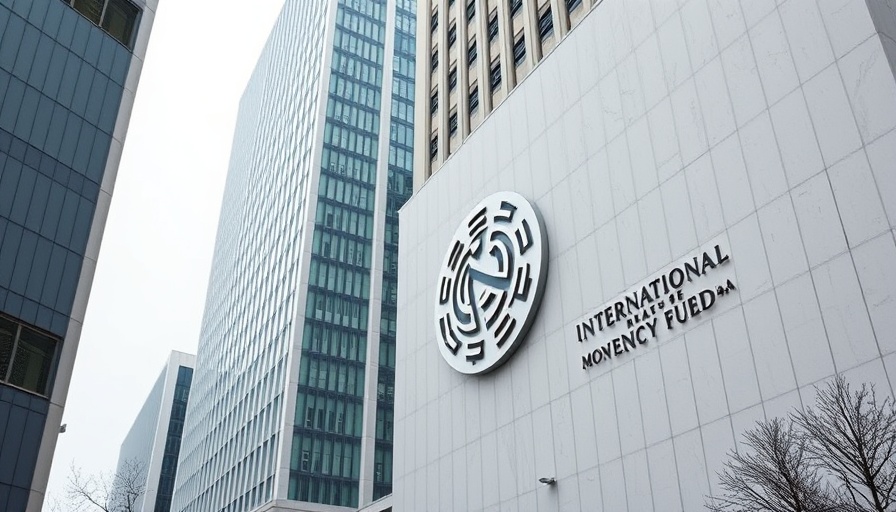
The IMF’s Revised Growth Forecasts and the Reality of Tariffs
The International Monetary Fund (IMF) has recently updated its global growth forecasts for 2025 and 2026, slightly improving them amidst a landscape riddled with tariff concerns and geopolitical tensions. As reported, the IMF raised its growth forecast by 0.2 percentage points to 3.0% for 2025, and by 0.1 percentage point to 3.1% for 2026. While these adjustments may seem positive at first glance, they mask underlying challenges that could affect global economies.
This forecast comes as the IMF acknowledges stronger-than-expected consumer purchases ahead of a significant hike in U.S. tariffs set for August. Interestingly, the effective U.S. tariff rate has decreased from 24.4% to 17.3%, which provides a temporary cushion against economic strain. However, the chief economist at the IMF, Pierre-Olivier Gourinchas, cautioned that even with this slight improvement, the world economy is still suffering, indicating that the current recovery is fragile and vulnerable.
Understanding the Impacts of Tariffs
The implications of tariffs extend beyond numbers and percentages; they affect real people and businesses. Increased tariffs can lead to higher prices for consumers, curb spending, and reduce overall economic growth. The expectation that global headline inflation will fall to 4.2% in 2024 and further to 3.6% in 2026 may not stabilize markets as anticipated, especially since inflation is projected to remain above target levels in the U.S. as tariffs filter through to consumers.
Moreover, the possibility of a resurgence in tariff rates hangs over the global economy like a dark cloud. If governments choose to raise tariffs instead of lowering them, the current modest improvements in growth could evaporate, leading to heightened financial instability.
Geopolitical Tensions and Financial Conditions
Geopolitical tensions continue to pose a significant risk to global economies. With countries increasingly prioritizing national interests, trade relations can become strained, affecting not only tariffs but also investments and growth strategies. These tensions can lead to larger fiscal deficits that increase interest rates, tightening global financial conditions.
In such an unpredictable scenario, investors must tread carefully, employing solid investment strategies that account for varied financial landscapes. A diverse portfolio can mitigate risks, whether through exposure to international markets, asset classes, or sectors poised for growth amidst economic challenges.
Investment Strategies in a Volatile Market
Given the economic conditions forecasted, individuals and institutional investors alike should consider adaptable investment strategies to navigate this landscape. Here are a few approaches to keep in mind:
- Portfolio Diversification: Incorporating a mix of asset types, including stocks, bonds, and commodities, can buffer against the volatility driven by fluctuations in tariffs and inflation.
- Focus on Sustainable Investments: As environmental, social, and governance (ESG) considerations grow in importance, aligning investments with sustainability can enhance returns while also addressing broader societal goals.
- Utilizing Dollar-Cost Averaging: This strategy reduces the impact of volatility by allowing investors to purchase investments at regular intervals, regardless of price shifts.
Conclusion: Preparing for the Future
The IMF’s revised growth forecasts showcase a mixed bag of optimism tempered with cautionary notes about tariffs and geopolitical tensions. For everyday investors and businesses, the onus lies in making informed decisions that consider potential risks and opportunities in the evolving economic landscape.
In these uncertain times, it helps to stay informed and align investment strategies with long-term goals. Engaging with skilled investment professionals or using robust investment apps for research can also empower smarter decision-making in your financial journey.
 Add Row
Add Row  Add
Add 



Write A Comment